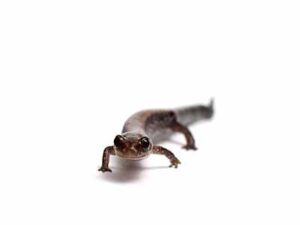Basement Windows
This is part of a series of articles based on Jacob’s new book called the Book of Nature Connection – 70 Sensory Activities for all Ages, published by New Society Press and released on April 18th, 2022.
Much of what goes on in the world is hidden from view. There is a magical underworld replete with tiny dragons, earth boring submarines and shape shifters. All you need to do is peak! To discover these special places, simply venture into a forest. Before you go, provide each participant with a magnifying glass if possible and a small container (a glass jar, yogurt container or bug jar). 
Carefully lift up a rock or a log and look underneath. These are the windows into the world below. You might be lucky enough to spot a salamander (looks a bit like a very small dragon) or a plump earth worm (these have the capability of plunging down deep just like a submarine). You even might see a pill bug, a tiny crustacean that rolls up into a tight ball when threatened (a shape shifter). What magical creatures can you find? What are they and how do they help to maintain a healthy and diverse forest ecosystem?
Earthworms help to aerate the soil and provide nutrients with their castings (worm pooh). Thousands of fungi bacteria, millipedes and pillbugs decompose leaves, branches and wood, helping to create rich and fertile soil. Many beetles and their larvae are an important food source for mammals, amphibians and birds.
If you can, have everyone carefully scoop their critter discoveries into a container. Have each participant sit in a circle facing inward. On a given signal pass have everyone pass their container to the right at the same time. Ask one of the questions posed below then pass your critter again to the right. Continue this pattern. Here are some sample questions. Feel free to ask your own.
• Study your critter’s mouth parts. What do you think it eats?
• How does your critter move?
• Can you see it breathing?
• Insects have compound eyes (or many little eyes bunched into one eye). Can you see your critter’s eyes?
• Is your critter camouflaged? Think about where you found it.
• How might your critter protect itself?
• What do you think your critter is? If you can, have an insect field
guide handy as a resource.
Please place your critters back exactly where you found them. Don’t forget to gently close your window, being careful not to squish or harm your discovery. What else can you discover by opening yet another nature basement window?
Submitted by Jacob Rodenburg, Executive Director of Camp Kawartha, an award-winning outdoor education centre and summer camp.




